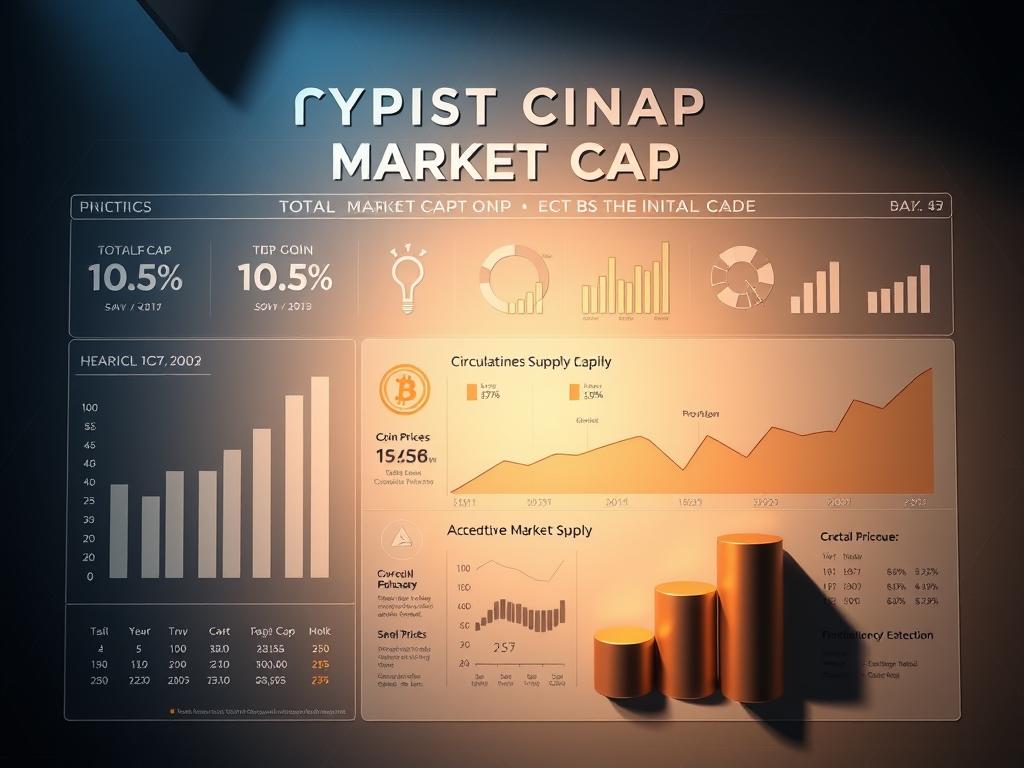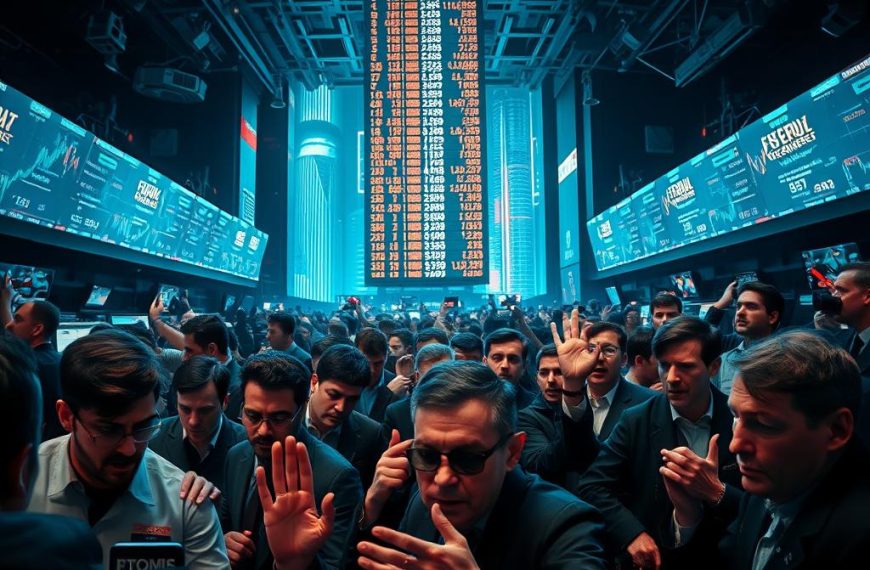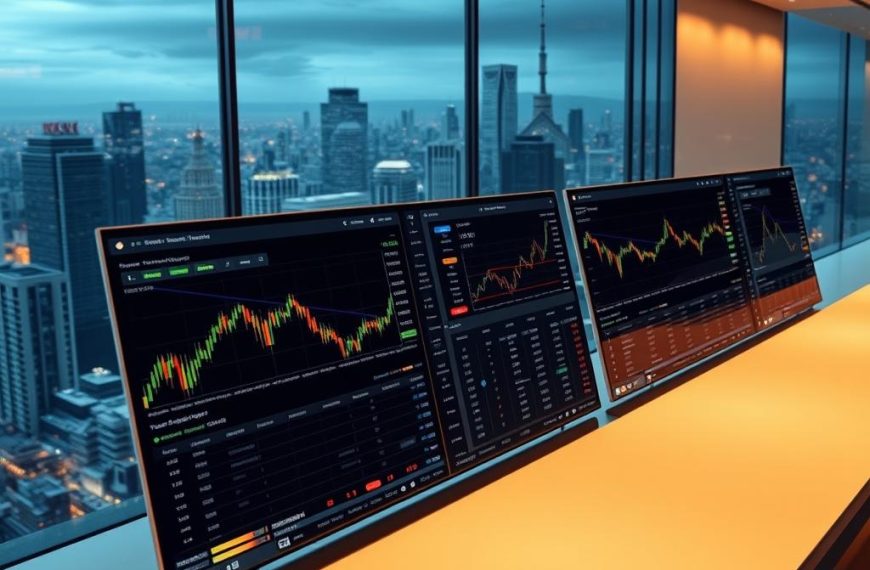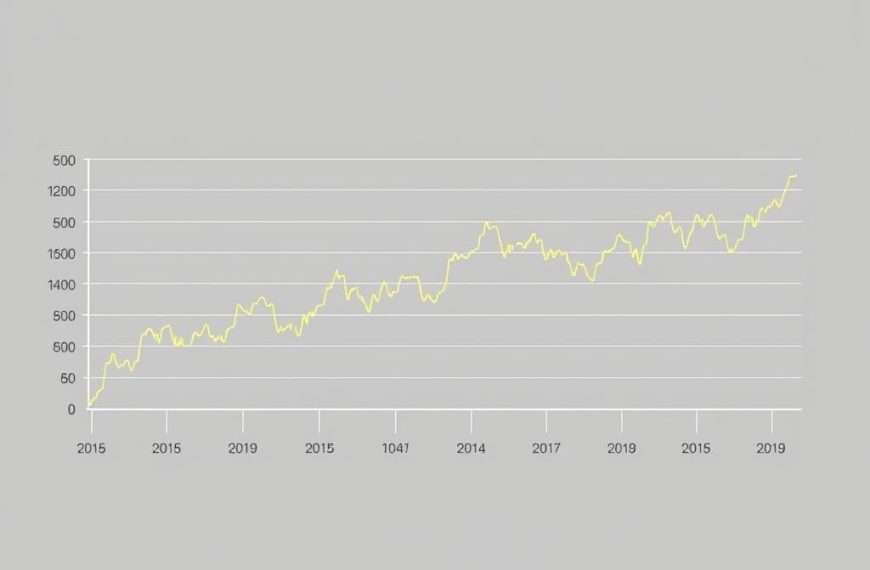Grasping cryptocurrency market cap is vital for investors in the digital finance world. It shows a cryptocurrency’s total value. This is found by multiplying its price by the coins in circulation1.
Over 15 years, cryptocurrencies have changed financial markets. Market cap has become a key way to assess digital assets1. The total crypto market cap has reached impressive heights, touching about £3.3 trillion recently2.
Investors use market cap to gauge cryptocurrencies’ potential and stability. Bitcoin leads with a market cap of roughly £1.94 trillion2. This metric reveals a cryptocurrency’s value, liquidity, and investor trust2.
Cryptocurrency market caps vary widely. They range from small-cap tokens under £1 billion to large-cap ones over £10 billion1. Understanding these groups helps investors make smart choices in the ever-changing crypto market.
Understanding Cryptocurrency Market Capitalisation
Cryptocurrency market capitalisation is a vital metric for investors. It shows the potential and current value of digital assets. This metric offers a clear view of a cryptocurrency’s market performance3.
Market cap connects traditional finance with digital currencies. It’s a key tool for understanding the crypto world.
Market cap is the total value of a cryptocurrency. It’s calculated by multiplying the current price by circulating coins3. This gives investors crucial insights into crypto market value.
It also helps assess the significance of different digital assets. Investors use this data to make informed decisions.
What Makes Market Cap Essential for Investors
Market cap is more than just a valuation tool. Investors use it to assess various aspects of cryptocurrency investments:
- Categorising cryptocurrencies into different market segments4
- Understanding potential risk and volatility4
- Evaluating market dominance and stability
Types of Market Capitalisation
Cryptocurrencies fall into three market cap categories:
- Large-cap cryptocurrencies: Over $10 billion, considered more stable34
- Mid-cap cryptocurrencies: Ranging from hundreds of millions to billions, offering moderate growth potential34
- Small-cap cryptocurrencies: Under $500 million, typically more volatile and risky34
Market cap provides a snapshot of a cryptocurrency’s market perception, though it doesn’t always reflect fundamental value3.
Investors should look beyond market cap when making decisions. Trading volume and economic conditions are also important factors34. A well-rounded approach helps create a solid investment strategy.
How Do You Calculate Market Cap in Cryptocurrency?
Calculating crypto market cap is vital for investors in digital currencies. It offers a quick view of a cryptocurrency’s worth and importance1.
Crypto market cap shows a digital asset’s total value. It’s found by multiplying the current price by the circulating supply5. This helps investors compare different cryptocurrencies.
The Basic Market Cap Formula
Use this simple equation to calculate crypto market cap:
- Market Cap = Current Price × Circulating Supply1
Circulating Supply vs Total Supply
Circulating supply means coins available in the market now. Total supply includes all mined coins5. Knowing this difference is key.
Real-World Market Cap Examples
| Cryptocurrency | Price | Circulating Supply | Market Cap |
|---|---|---|---|
| Bitcoin (BTC) | $67,834 | 19.7 million | $1.34 trillion6 |
| Ethereum (ETH) | $3,525 | 120.5 million | $425 billion6 |
| Tether (USDT) | $1.00 | 112 billion | $112 billion6 |
Market cap categories help gauge cryptocurrency size:
- Large-cap: Over $10 billion6
- Mid-cap: Between $1 billion and $10 billion6
- Small-cap: Under $1 billion6
Remember, market caps can change quickly. This reflects the fast-paced nature of crypto markets5.
Market Cap Categories and Their Significance
Cryptocurrency market capitalisation is divided into categories that help investors understand digital assets’ potential and risk. These range from small-cap to large-cap crypto, each offering unique investment features7.
- Small-cap crypto: Cryptocurrencies with market capitalisation below $100 million7
- Mid-cap crypto: Digital assets with market capitalisation between $100 million and $1 billion7
- Large-cap crypto: Cryptocurrencies with market capitalisation over $1 billion7
Market cap is crucial when evaluating potential investments. Large-cap cryptocurrencies like Bitcoin and Ethereum are typically more stable. They show less volatility compared to smaller market cap alternatives8.
| Category | Market Cap Range | Investment Characteristics |
|---|---|---|
| Small-cap Crypto | Below $100 million | High risk, high potential growth |
| Mid-cap Crypto | $100 million – $1 billion | Moderate risk, developing potential |
| Large-cap Crypto | Over $1 billion | Lower risk, more established |
Recent data shows the top 10 cryptocurrencies by market cap include Bitcoin, Ethereum, and Tether. This demonstrates the concentration of value in large-cap crypto assets7.
Factors Affecting Cryptocurrency Market Cap
Cryptocurrency market capitalisation is a dynamic landscape influenced by multiple critical factors. It shapes digital asset valuations in complex ways. Understanding these factors helps investors navigate the ever-changing cryptocurrency ecosystem.
The cryptocurrency market experiences significant market cap fluctuations. These are driven by several interconnected elements. They include:
- Price volatility
- Trading volume
- Investor sentiment
- Regulatory environments
Price Fluctuations and Market Sentiment
Market sentiment plays a crucial role in cryptocurrency valuations. Positive news can quickly inflate market caps. Negative perceptions, however, can cause swift declines9.
Small-cap cryptocurrencies are more vulnerable to price manipulations. This is due to their lower market values9.
Trading Volume Impact
Trading volume is a key indicator of market liquidity and investor interest. Higher volumes can signal strong market engagement. This can potentially drive market cap growth10.
Large-cap cryptocurrencies like Bitcoin show more stable trading patterns. They are less volatile compared to smaller market cap alternatives10.
Economic and Regulatory Influences
External economic factors and regulatory decisions greatly impact cryptocurrency market capitalisation. Government regulations can trigger substantial market cap fluctuations. Macroeconomic trends and global financial shifts also play a role9.
Cryptocurrency market caps are not static but dynamic representations of digital asset valuations.
Market Cap as an Investment Tool
Crypto investors use market cap analysis to make smart investment choices. This tool helps traders manage their digital asset portfolios strategically11.
Market cap categories help classify cryptocurrencies, much like in traditional stock markets:
- Nano-cap cryptocurrencies: Less than $50 million12
- Micro-cap cryptocurrencies: $50-300 million12
- Small-cap cryptocurrencies: $300 million to $2 billion12
- Mid-cap cryptocurrencies: $2-10 billion12
- Large-cap cryptocurrencies: $10-200 billion12
- Mega-cap cryptocurrencies: Over $200 billion12
Pros use market cap to weigh risks and returns. Small-caps offer higher growth but more volatility. Large-caps are steadier and seen as safer bets12.
Diversification is crucial in crypto investing. Spreading investments across market cap groups can balance risk and growth potential11.
Remember that market cap is just one factor in cryptocurrency investment. Always consider additional metrics like technology, adoption, team expertise, and market sentiment.
Common Misconceptions About Cryptocurrency Market Cap
Investors often misunderstand market cap, leading to crypto valuation errors. Grasping these misconceptions is vital for smart cryptocurrency investing13.
Many believe market cap equals a cryptocurrency’s fundamental value. However, it’s just circulating supply times current price14. A high market cap doesn’t always mean a better digital asset.
- Market cap does not represent total money invested
- High market cap doesn’t guarantee investment success
- Cryptocurrency valuation requires deeper analysis
Investors should be aware of several key market cap myths:
- Market Cap Equals Investment Value: A common crypto valuation error is assuming market cap reflects actual money invested13.
- Larger Always Means Better: Large-cap cryptocurrencies might offer stability, but they don’t guarantee superior returns14.
- Market Cap Is Static: In reality, market capitalisation fluctuates rapidly based on price changes and market sentiment13.
“Market cap is a snapshot, not a comprehensive investment blueprint.”
Critical thinking is crucial when assessing cryptocurrency investments. Consider multiple factors beyond market cap for more informed decisions14.
Conclusion
Market capitalisation is crucial for crypto market analysis. It offers investors a snapshot of a cryptocurrency’s value and market position15. Understanding market cap helps make informed decisions, but it shouldn’t be the only factor considered16.
Investors must look beyond market capitalisation alone. A holistic approach is necessary for effective crypto market analysis. This includes examining technology, adoption rates, development teams, and broader market trends17.
Market cap remains vital as the cryptocurrency landscape evolves. It’s a key tool for understanding market dynamics. Successful investors use this metric alongside thorough research15.
A balanced perspective is crucial in the volatile digital asset ecosystem. Smart investment decisions come from understanding market cap, technology, and market sentiment. This approach helps investors navigate the dynamic crypto market more effectively16.
FAQ
What exactly is cryptocurrency market capitalisation?
Cryptocurrency market capitalisation is the total value of all existing coins or tokens. It’s calculated by multiplying a cryptocurrency’s current price by its circulating supply. This metric offers a quick overview of a cryptocurrency’s overall value and market importance.
How does market cap differ from the price of a cryptocurrency?
Market cap shows a cryptocurrency’s total value, while price represents a single coin’s worth. A cryptocurrency with a lower coin price but large supply could have a higher market cap. This contrasts with coins having higher prices but fewer in circulation.
Why is market cap important for cryptocurrency investors?
Market cap helps assess a cryptocurrency’s size and potential stability. Large-cap cryptocurrencies like Bitcoin are often seen as more stable. Small-cap cryptocurrencies may offer higher growth potential but come with increased risk.
What are the different market cap categories in cryptocurrency?
Cryptocurrencies fall into three market cap sizes:
– Large-cap: Over billion (e.g., Bitcoin, Ethereum)
– Mid-cap: Between
FAQ
What exactly is cryptocurrency market capitalisation?
Cryptocurrency market capitalisation is the total value of all existing coins or tokens. It’s calculated by multiplying a cryptocurrency’s current price by its circulating supply. This metric offers a quick overview of a cryptocurrency’s overall value and market importance.
How does market cap differ from the price of a cryptocurrency?
Market cap shows a cryptocurrency’s total value, while price represents a single coin’s worth. A cryptocurrency with a lower coin price but large supply could have a higher market cap. This contrasts with coins having higher prices but fewer in circulation.
Why is market cap important for cryptocurrency investors?
Market cap helps assess a cryptocurrency’s size and potential stability. Large-cap cryptocurrencies like Bitcoin are often seen as more stable. Small-cap cryptocurrencies may offer higher growth potential but come with increased risk.
What are the different market cap categories in cryptocurrency?
Cryptocurrencies fall into three market cap sizes:
– Large-cap: Over $10 billion (e.g., Bitcoin, Ethereum)
– Mid-cap: Between $1 billion and $10 billion
– Small-cap: Under $1 billion
How often does a cryptocurrency’s market cap change?
Market cap changes continuously, updating in real-time based on current market price and circulating supply. Price fluctuations, trading volume, and market sentiment can cause rapid changes in a cryptocurrency’s market cap.
Is a higher market cap always better?
Not always. A high market cap shows market valuation but doesn’t guarantee future performance. Investors should consider technology, adoption, team expertise, and long-term potential beyond just market capitalisation.
How do I calculate a cryptocurrency’s market cap?
The formula is: Market Cap = Current Price × Circulating Supply. For example, if Bitcoin trades at £30,000 with 19 million coins in circulation, its market cap is £570 billion.
What’s the difference between circulating supply and total supply?
Circulating supply is the number of coins currently available in the market. Total supply includes all created coins, including those not yet released or locked. Market cap calculations typically use circulating supply for accuracy.
Can market cap predict a cryptocurrency’s future performance?
Market cap alone cannot reliably predict future performance. It provides insights into current market valuation. Successful cryptocurrency investing requires comprehensive research, understanding technology, market trends, and potential adoption.
How do external factors impact cryptocurrency market cap?
Regulatory changes, technological developments, and global economic conditions can greatly influence market cap. Media coverage and overall market sentiment also play a role. Major announcements or regulatory shifts can cause substantial fluctuations in price and market capitalisation.
billion and billion
– Small-cap: Under
FAQ
What exactly is cryptocurrency market capitalisation?
Cryptocurrency market capitalisation is the total value of all existing coins or tokens. It’s calculated by multiplying a cryptocurrency’s current price by its circulating supply. This metric offers a quick overview of a cryptocurrency’s overall value and market importance.
How does market cap differ from the price of a cryptocurrency?
Market cap shows a cryptocurrency’s total value, while price represents a single coin’s worth. A cryptocurrency with a lower coin price but large supply could have a higher market cap. This contrasts with coins having higher prices but fewer in circulation.
Why is market cap important for cryptocurrency investors?
Market cap helps assess a cryptocurrency’s size and potential stability. Large-cap cryptocurrencies like Bitcoin are often seen as more stable. Small-cap cryptocurrencies may offer higher growth potential but come with increased risk.
What are the different market cap categories in cryptocurrency?
Cryptocurrencies fall into three market cap sizes:
– Large-cap: Over $10 billion (e.g., Bitcoin, Ethereum)
– Mid-cap: Between $1 billion and $10 billion
– Small-cap: Under $1 billion
How often does a cryptocurrency’s market cap change?
Market cap changes continuously, updating in real-time based on current market price and circulating supply. Price fluctuations, trading volume, and market sentiment can cause rapid changes in a cryptocurrency’s market cap.
Is a higher market cap always better?
Not always. A high market cap shows market valuation but doesn’t guarantee future performance. Investors should consider technology, adoption, team expertise, and long-term potential beyond just market capitalisation.
How do I calculate a cryptocurrency’s market cap?
The formula is: Market Cap = Current Price × Circulating Supply. For example, if Bitcoin trades at £30,000 with 19 million coins in circulation, its market cap is £570 billion.
What’s the difference between circulating supply and total supply?
Circulating supply is the number of coins currently available in the market. Total supply includes all created coins, including those not yet released or locked. Market cap calculations typically use circulating supply for accuracy.
Can market cap predict a cryptocurrency’s future performance?
Market cap alone cannot reliably predict future performance. It provides insights into current market valuation. Successful cryptocurrency investing requires comprehensive research, understanding technology, market trends, and potential adoption.
How do external factors impact cryptocurrency market cap?
Regulatory changes, technological developments, and global economic conditions can greatly influence market cap. Media coverage and overall market sentiment also play a role. Major announcements or regulatory shifts can cause substantial fluctuations in price and market capitalisation.
billion
How often does a cryptocurrency’s market cap change?
Market cap changes continuously, updating in real-time based on current market price and circulating supply. Price fluctuations, trading volume, and market sentiment can cause rapid changes in a cryptocurrency’s market cap.
Is a higher market cap always better?
Not always. A high market cap shows market valuation but doesn’t guarantee future performance. Investors should consider technology, adoption, team expertise, and long-term potential beyond just market capitalisation.
How do I calculate a cryptocurrency’s market cap?
The formula is: Market Cap = Current Price × Circulating Supply. For example, if Bitcoin trades at £30,000 with 19 million coins in circulation, its market cap is £570 billion.
What’s the difference between circulating supply and total supply?
Circulating supply is the number of coins currently available in the market. Total supply includes all created coins, including those not yet released or locked. Market cap calculations typically use circulating supply for accuracy.
Can market cap predict a cryptocurrency’s future performance?
Market cap alone cannot reliably predict future performance. It provides insights into current market valuation. Successful cryptocurrency investing requires comprehensive research, understanding technology, market trends, and potential adoption.
How do external factors impact cryptocurrency market cap?
Regulatory changes, technological developments, and global economic conditions can greatly influence market cap. Media coverage and overall market sentiment also play a role. Major announcements or regulatory shifts can cause substantial fluctuations in price and market capitalisation.
Source Links
- Cryptocurrency Market Cap Explained | Caleb & Brown
- What is the market cap in cryptocurrency? Meaning & Calculation
- What is market cap? A guide to market capitalization in crypto
- What is Market Cap and why does it matter?
- Crypto Market Cap — What It Is and Why It Matters
- The Crypto Market Cap: A Guide for Beginners
- What is Market Cap in Cryptocurrency? And how to calculate?
- What is Crypto Market Cap and How To Calculate It? – Phemex Academy – Phemex Academy
- What is Market Cap in Crypto? (2025) | CoinLedger
- Crypto Market Caps | What Are They and Why Do They Matter?
- What is market cap and how do you calculate it? | Fidelity
- Market Capitalization: What It Is, Formula for Calculating It
- Market capitalization overview and explanation of its main factors
- Market Cap in Crypto Explained
- What is Market Cap – Basics, Definition, How to Calculate | m.Stock
- What Is Market Cap and Why Is It Important?
- Market Capitalization: What is Market Capitalization, Meaning, Types & Formula | Tata Moneyfy


















